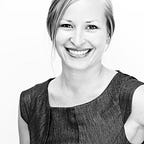How to make better decisions
One of the core issues we all have to tackle every day is how to make decisions.
If you are anything like me, you make a decision, look at the outcome and then blame yourself for not making the right decision.
“I should have known…”
But the latest and absolutely insanely valuable book How to Decide: Simple Tools for Making Better Choices from Annie Duke shows a better way to approach the way we think of and make decisions.
Here are key takeaways so far that actually let you breath more easily and become more graceful towards yourself.
Resulting and hindsight
Imagine this: you are driving home from work or shopping and you decide to take the fast route home.
Only that the fast route turns out to be the extremely slow and congested… and you arrive home 40 min later than you had planned.
Was your decision to take the route good or not?
Most of us would say no, the decision was not good because we arrived home 40 min late.
And the majority of us would be thinking “I should have known that the route does get congested and I should have taken the other route”.
This is what is called resulting: looking at the outcome of our decision and using the outcome to evaluate how good or bad our decision was.
But Annie says that this kind of thinking destroys the grace of understanding decisions.
Your outcome is not your decision because there are 2349389 (well maybe not that many) possibilities how that decision could have turned out.
What is more important is to go back to the moment when you made the decision and ask yourself: what information do I have available at this point in time to make my decision?
With the route example, you had likely taken the route before and it got you home faster (experience), you knew it was shorter, there were not many traffic lights etc.
But you could not have anticipated that there would be a car crash that stopped the traffic, or traffic jam because of roadworks, or that every person in your town decided to go home at that exact time.
Experience matters but more so in recognising decision contexts
If we focus only on outcomes of our decisions, we are most likely to learn the wrong lessons and not make better decisions.
Because the decision context matters often more.
Outcomes are a mix of bad and good luck and factors outside of our control.
Learning what decision contexts looks like is therefore more important and also paying attention to probabilities and potential outcomes.
In the book, Annie introduces decision trees that you can use to map out your decision and potential outcomes.
Write your decision first on the left, and then write all potential outcomes that you can think of.
These are a mix of worst case scenarios to fairytale fantasies, both good and bad.
Look at the outcomes at this point and circle those that you actually appeal to you and that you’d like to see happen.
Then, assign probabilities to these outcomes (e.g. percentages/very likely vs. highly unlikely) as to how probable each outcome is based on the information that you have.
The key here is to be realistic but open minded: to explore the alternatives while recognising why something might happen or not.
Once you look at all possibilities, their probabilities, and identify which outcomes you would be happy with, you have a much better idea what steps you can take.
Also, you have a much better understanding of the things that might go wrong and put in risk management strategies to reduce those outcomes.
Making better decisions in 2021
I think many of us cannot wait for 2020 to be over… at least that seems to be the overall opinion in social media.
Making better decisions is definitely something most of us consider especially when New Year draws closer and we all pause to think what we’d like our lives be like in the coming year.
Which decisions have not helped us this year, what we need to do better and what we’d like to achieve.
For this purpose, it is really essential to do 2 things:
- To stop blaming ourselves for outcomes and re-focus on decision-making context/moment.
- To honestly start pre-thinking our decisions with decision trees and map out outcomes + probabilities.
Ask yourself this when you make a decision: “What information do I have available at this moment to make this decision? What information am I basing this decision on?”
Even asking such a simple question can help you to know whether you even have the right/necessary information and if not, it helps you to find out more before deciding.
And as always, make a habit of writing down your decision moment: the information, potential outcomes, and their probabilities.
If it is a big decision, test this decision tree with family and friends to see whether they agree e.g. on the range of potential outcomes and how likely they think these are.
(Note: when using probability language e.g. “very likely” find out exactly what they mean e.g. 60% or 70% likelihood to make sure you are on the same page).
And then, once an outcome materialises, go back to your decision tree/moment and compare your pre-ideas with what actually happened and why.
We learn through repetition and by capturing in writing your process and thoughts you can learn the right lessons you need to have a wonderful 2021 and beyond :).
Originally published at https://johannanalau.com on December 30, 2020.
